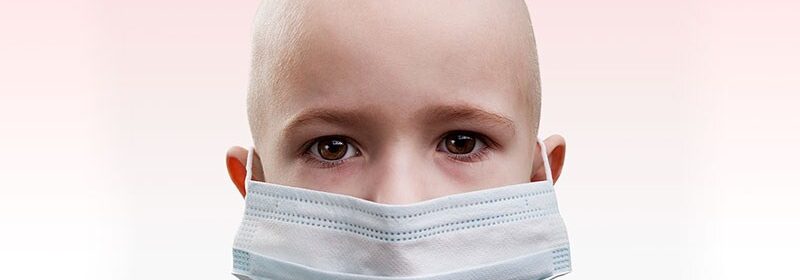1 in 10 Children With Cancer Injured by Medication Error

New research suggests that medication errors are fairly common among pediatric patients with leukemia or lymphoma.
Among 131 children taking nearly 1670 medications, researchers identified more than 400 medication errors (24.4%) over a 7-month period, including 242 with potential for harm.
Notably, the researchers found that 10% of children were injured by medications errors, an outcome the authors believe could have been prevented.
Lead author Chris Wong, MD, MPH, said human harm is inevitable but that she was surprised by the number of instances of harm caused by the medication errors.
“Our everyday practice tells us that in a general sense, we do see errors, but we’re not in the home so we only hear what we hear when the families catch it or someone in the clinic catches it,” said Wong, a pediatric hematologist-oncologist at University Hospitals Rainbow Babies and Children’s Hospital in Cleveland, Ohio. “Almost half of the patients had an error that could lead to harm and then 10% of patients had an error that actually led to harm, so that’s pretty significant numbers and we know this is just sort of scratching the surface.”
The observational study was published online January 27 in the journal Cancer.
A growing body of evidence indicates that outpatient medication errors are common in children with cancer. Studies have shown an error rate ranging from 2%-19% and missed oral chemotherapy doses ranging from 10%-40%. Still, little longitudinal data exist on the types and frequency of these errors and the resulting harms.
The researchers explored the rates and types of medication errors and harm to outpatients with leukemia and lymphoma over 7 months of treatment, gathering data from three pediatric cancer centers in the Midwest and the Southeastern United States from August 2016 to March 2019.
Nurses conducted 367 home visits to 131 children aged 18 years or younger receiving oral chemotherapy to treat leukemia or lymphoma. The median participant age was age 6 years and 94% had a leukemia diagnosis. Overall, children were receiving 1669 medications over 29,987 patient days, and children took a median of 12 medications (range, 2-33 drugs).
During the home visits at 3 and 6 months, nurses asked caregivers a comprehensive series of questions about dose and frequency, indication, and missed doses or problems, and they directly observed caregivers administering medicine. Nurses logged how a medication was supposed to be taken as well as how the caregiver reported giving the medication and how it was actually administered.
Nurses then recorded detailed information about possible errors, and physicians reviewed each event to determine whether an error occurred as well as its severity. Error severity was determined using the National Coordinating Council for Medication Error Reporting and Prevention Severity Index and was categorized as significant, serious, life‐threatening, or fatal.
Overall, Wong and colleagues found that 79% of children experienced at least one medication error with an overall rate of 12.4 errors per 1000 patient days. In addition, 42% of children had at least one error with the potential for harm and 10% experienced harm from an error. That translated to 39 errors, with an overall rate of 1 error with harm per 1000 patient‐days.
The most common reason for an error with potential for harm was administration at home (78%), followed by errors in prescribing (18%). The authors observed 92 instances of oral chemotherapy underdosing occurred in about one third of patients, which included 55 instances of missed doses, 24 instance of caregiver‐administered underdoses, and 8 instances of never taking the medication. In addition, 10 patients experienced chemotherapy overdoses, which included two errors in prescribing and eight in home administration.
Of the 39 errors that injured a patient, three (8%) resulted in serious harm and 36 resulted in significant harm. One serious overdose error occurred, which resulted in prolonged cytopenia.
Most errors that led to harm happened because of caregiver administration errors, such as dosing errors or miscommunication between caregivers leading to double or missed doses.
Notably, physician reviewers said that improved communication among caregivers as well as between caregivers and clinicians could have prevented most of the errors that caused harm.
The authors recommended several interventions, which included improved pharmacist‐caregiver or physician‐caregiver communication alongside detailed written instructions and records, use of support tools such as a calendar and alarms, as well as between‐clinic appointment check-ins, such as a visiting nurse or weekly feedback to clinicians about home medication use.
Senior author Kathleen Walsh, MD, said there needs to be better communication between the healthcare system, the patient, and caregivers for everything to work smoothly.
“I think it’s important for people to remember that healthcare in the outpatient setting is largely done by family members and that they need a lot of support,” said Walsh, a pediatrician at Boston Children’s Hospital. “We [healthcare professionals] need to figure out how to reduce the burden for them and make it easier; that’s really important for patients and their families.”
In an accompanying editorial, Sara Helmig, MD, and James Hoffman, PharmD, MS, both affiliated with St. Jude Children’s Research Hospital, Memphis, Tennessee, noted that interventions, including calendars as well as more in-person or technology-enabled home visits, can help reduce medication errors and improve communication.
“Technology solutions that would connect the medical team to patients and their caregivers for patients of all distances from the treatment site would be a worthwhile and potentially more feasible start,” the editorialists write. But “even without infrastructure for an actual or technology enabled home visit, an intervention to consider would be to have the caregivers go through their medication administration routine during a clinic visit.”
For more from Medscape Oncology, join us on Twitter and Facebook
Source: Read Full Article